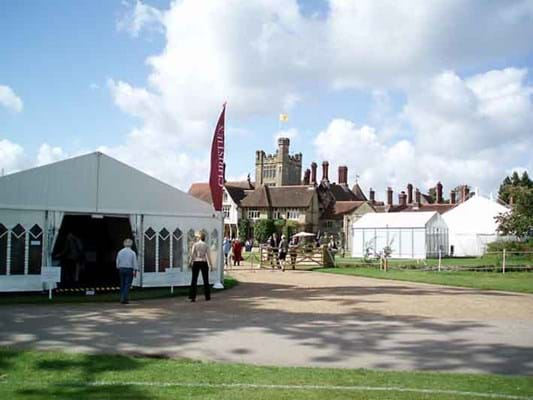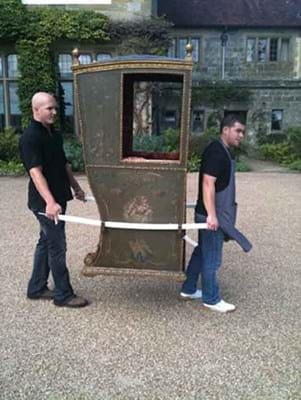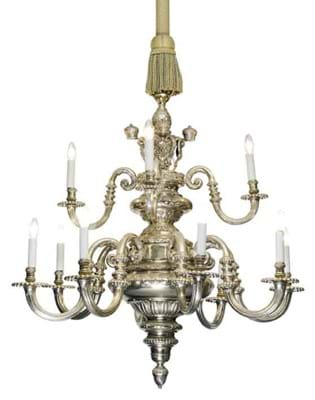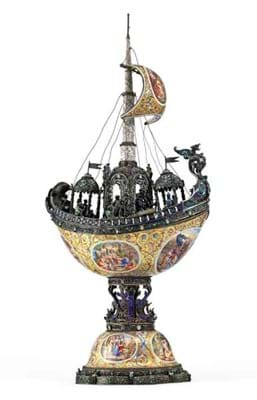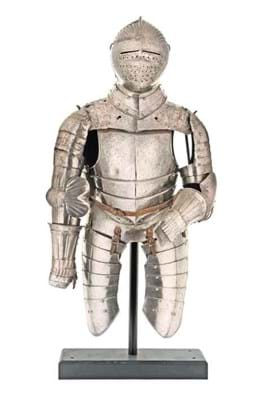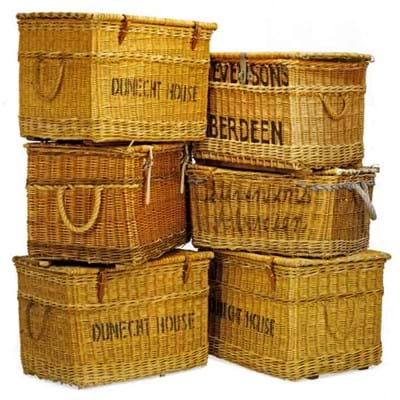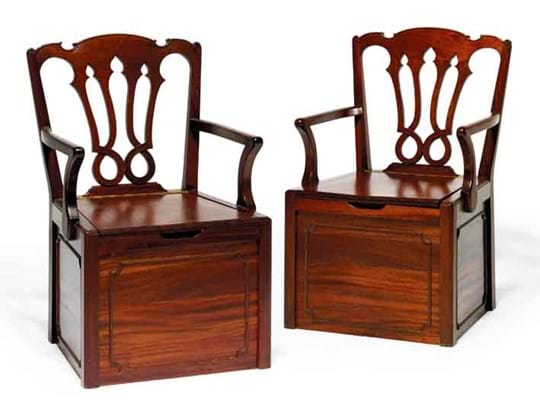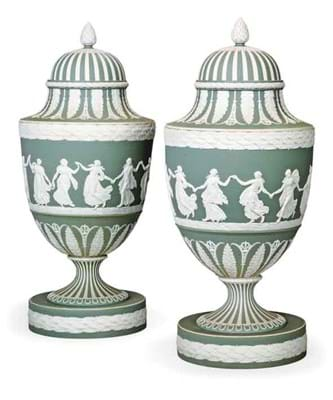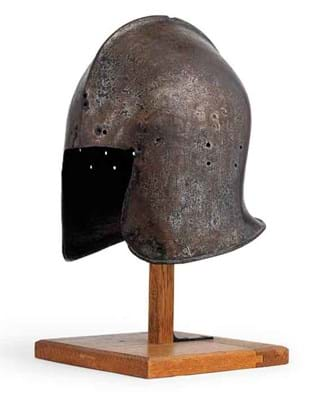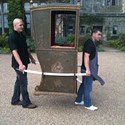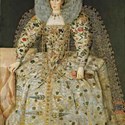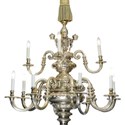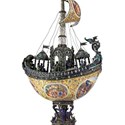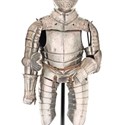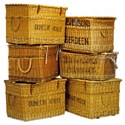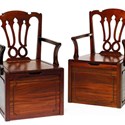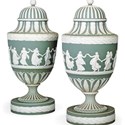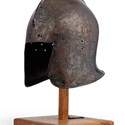From September 13 to 15, Christie's dispersed the contents of Cowdray Park and Dunecht House, the Scottish home of Viscount Cowdray's brother, the Hon. Charles Pearson. By close of play on the final day, over 4500 people had passed through the gates of Cowdray Park, either to visit the house for the preview (opened to the public for the first time) or to attend the sale.
Held in a large marquee just across the lawn from the house, the opening day of the sale was reasonably well attended despite the tail-end of Hurricane Katia doing its best to disrupt proceedings with strong winds and several torrential downpours. Around 100 people, including a healthy contingent of locals, were present for the session.
The marquee was by no means full, however, and since bidding in the room was scarce at times, it appears that even country house sales held in situ have had to adapt to 21st century saleroom practices.
Two miles of cable fed electricity to 80 telephone lines, whilst the online bidding via Christie's Live helped secure clients from 34 countries. The marquee itself had been tailored to use the house as a scenic backdrop; it was visible through a clear plastic 'wall', providing a direct link between the home and its contents lest bidders should forget.
Cowdray Park was built amid 16,500 acres of prime West Sussex countryside by the 7th Earl of Egmont in 1878, four years after he inherited; the land also includes the ruins of a Tudor house, formerly known as Cowdray House, which was devastated by fire in 1793. The estate was purchased in 1908 by Weetman Dickinson Pearson, the 1st Viscount Cowdray, a self-made tycoon who built a business empire from a small construction company, its descendant the global media and education corporation Pearson PLC. A 'princely estate' by Pearson's own admission, it was rapidly filled with pictures, furniture and works of art.
A year later, the family's desire for a property north of the border was satisfied with the purchase of Dunecht House in Aberdeenshire, built in 1820 as the family home of the Earl of Crawford and Balcarres. Both properties, furnished almost simultaneously, were decorated with an emphasis on tradition allied to modern comfort.
Dunecht and Cowdray are now on the market, the upkeep of the latter has proven too onerous for Lord Pearson, who put the property up for sale at £25m last year but has yet to announce a buyer.
The combined contents of the houses filled the 530-page catalogue, offering a highly varied array of items, including several four-poster beds, suits of armour, paintings, tapestries, silver and silver furniture, chandeliers and European porcelain.
In what was effectively a clearance sale prior to disposing of the house, the aim was to offload as many lots as possible and most (but not all) of the estimates - and presumably reserves - had been tempered to allow for this. The approach paid off, as a healthy 93 per cent of lots found new homes, a tribute to Christie's marketing machine.
The sale raised a hammer total of £6.4m. This comfortably topped the £5m projection rather than blowing it out of the water in the manner of some of the auctioneers' past memorable on-the-premises contents sales, like Great Tew Park and Hackwood Park that had descended through generations or material commissioned centuries ago to improve an ancient family residence.
Moreover, some of the choicest items in the Cowdray collection had already gone under the hammer earlier in the year as part of Christie's high-season summer sales at King Street. These Old Master paintings and grand pieces of silver had generated some £9.6m, pushing the overall total for the Pearson collection up to very healthy £16m.
Christie's incorporated the best remaining pieces into the opening day, September 13, when anticipation and excitement was at its peak. The results were solid but not exceptional, with much going within or just over estimate.
Top Lots
Four full-size Elizabethan portraits had belonged to Lord Willoughby de Broke of Compton Verney until 1921, when they were bought by the 2nd Viscount Cowdray. The top lot, a portrait thought to be of the Countess of Nottingham, sold to London portrait dealer Mark Weiss.
Other notable results included a pair of c.1870, large Wedgwood green jasperware vases; several paintings by James Ferrier Pryde (1866-1941) from Dunecht; silver furniture from the Mexican Suite at Cowdray, a group of late 15th and early 16th century helmets; a pair of Cowdray chandeliers and a group of Austrian enamelled pieces which performed well despite punchy estimates.
There were, however, a few disappointing performances, including the highest valued pre-sale item, Sir Thomas Lawrence's (1769-1830) painting of the Viscountess Pollington with her son, John Charles, which only just managed to get away at £210,000 against a £300,000-500,000 estimate.
A self portrait by William Orpen was sold after the sale for considerably less than the £150,000-250,000 estimate.
For the private home furnisher, souvenir hunter or interior decorator there was much to whet the appetite. Christie's reported a higher volume of bidders frequenting the marquee on days two and three, when the auctioneers offered an array of more ordinary objects including laundry baskets, labelled kitchen jars, curtains, rugs and lamps.
The auction house also stated that a quarter of the buyers were from Sussex or the surrounding counties, attracted predominantly by the high-profile local provenance.
This Cowdray cachet came in handy in shifting many of the more everyday pieces, but the relatively low value of much of this material meant that the souvenir-seekers active on the latter days contributed little more than a quarter of the overall total.
The buyer's premium was 25/20/12%

